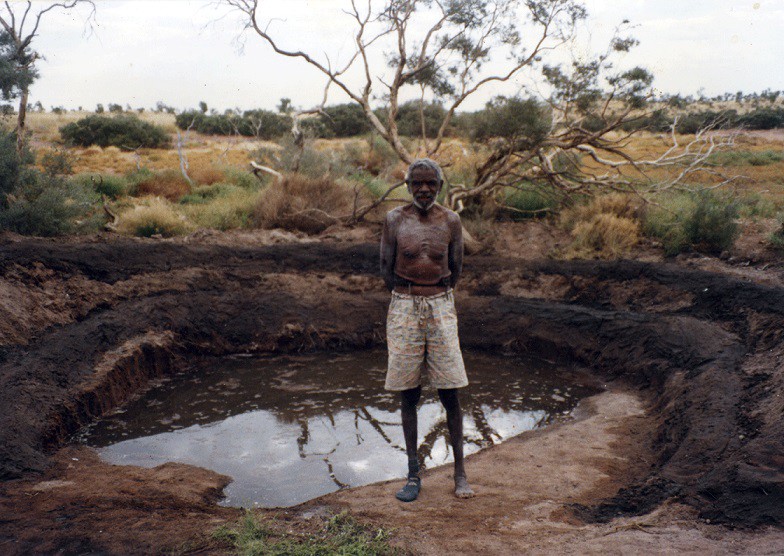Nicole Ma is an award-winning director and producer of new media, for Yiwarra Kuju: Canning Stock Route Project, and the inaugural exhibitions for the National Museum of Australia. Ma’s work includes the documentaries “Dances of Ecstasy,” “Kurtal Snake Spirit,” and “Be Happy Be Strong.” Ma began her film making career in New York producing music videos for Whitney Houston and Sonic Youth, and long-form concert films for Annie Lennox, Michael Bolton, and Newport Jazz Festival. (Press materials)
“Putuparri & the Rainmakers” will premiere at the 2016 Hot Docs Film Festival on May 1.
W&H: Describe the film for us in your own words.
NM: “Putuparri & the Rainmakers” is the story of a troubled Australian aboriginal man, Tom “Putuparri” Lawford, who is torn between his traditional culture, the distractions of alcohol, and the pain of dislocation. The film documents twenty tumultuous years in his life as he navigates the difficult yet profoundly rewarding journey back to his desert homeland — and his evolution as a rainmaker.
W&H: What drew you to this story?
NM: I am Australian-born Chinese. I grew up in Southeast Asia and lived for many years in New York. I didn’t understand the meaning of “home.” When I met Putuparri and his community in Fitzroy Crossing, I was struck by their profound connection to their country. It is holistic: a spiritual, physical, and mental relationship.
At the time the community was at a crossroads. The old people were passing away, and the big question was whether or not the next generation has what it takes to keep their traditional culture alive. It was this complex notion of home that I felt compelled to examine.
W&H: What do you want people to think about when they are leaving the theater?
NM: I am looking for an emotional response from the audience. I want them to connect with Putuparri’s world, and find a way to empathize with the characters and their plight.
I want people to think about Putuparri’s reciprocal relationship with his country — that if he looks after it, it will look after him. In our society with the drive for continual consumer growth this relationship with the natural world has lost its meaning for us.
W&H: What was the biggest challenge in making the film?
NM: The biggest challenge was keeping the faith that I could get the film made. Time was a double-edged sword. In retrospect, the elongated time span allowed me to accumulate footage and find the story. But there were many times over the years, especially after experiencing a major rejection from a funding body, when it would have been easier to give up.
W&H: How did you get your film funded? Share some insights into how you got the film made.
NM: “Putuparri” took more than ten years to make. I self-financed the film for seven years as I followed my subjects, built relationships, and collected footage. When the film started to pick up momentum, a successful crowd funding campaign enabled me to assemble some scenes demonstrated what the film could be. I met John Moore, my producer, and he put together a financing partnership with Screen Australia (federal funds), Film Victoria (state funds), Melbourne International Film Festival, and NITV (an indigenous broadcaster).
W&H: What’s the best and worst advice you’ve received?
NM: The best advice I received was “Make it better,” and the worst advice was “If you make it a musical, people will want to see your film.”
W&H: What advice do you have for other female directors?
NM: I have struggled with being an Asian female filmmaker. Our culture loves doctors and lawyers, and encourages us to be the model minority. Keep quiet and don’t cause trouble — that is our mantra. My advice is to seek out female role models — read about them, ask to meet them, and be inspired by their journey. Believe in yourself.
It is not about your gender — it’s about doing the best you can, and not listening to the negative voices in your head. Live life and experience the world, and find out what interests you. You have to be totally obsessed with your idea because you are its champion and cheerleader. Without you, the idea will die.
W&H: Name your favorite woman-directed film and why.
NM: I was in New York in the 90s when I saw my first feature documentary, “Who Killed Vincent Chin?,” directed by two women — Christine Choy and Renee Tajima-Peña. I was working in the film industry where Asians, either in front of or behind the camera, were uncommon.
“Who Killed Vincent Chin?” is an Asian story, set in an Asian community, and directed by two Asian women. It was groundbreaking, and had been nominated for an Academy Award for Best Documentary Feature! It opened my eyes to possibilities that I had not dreamed of until that seminal moment.







